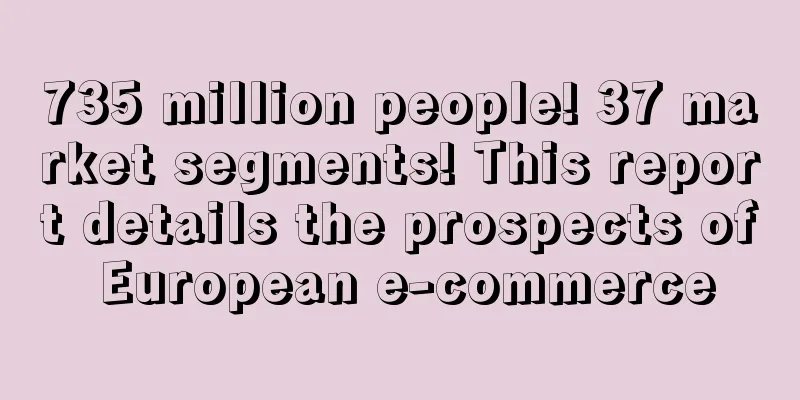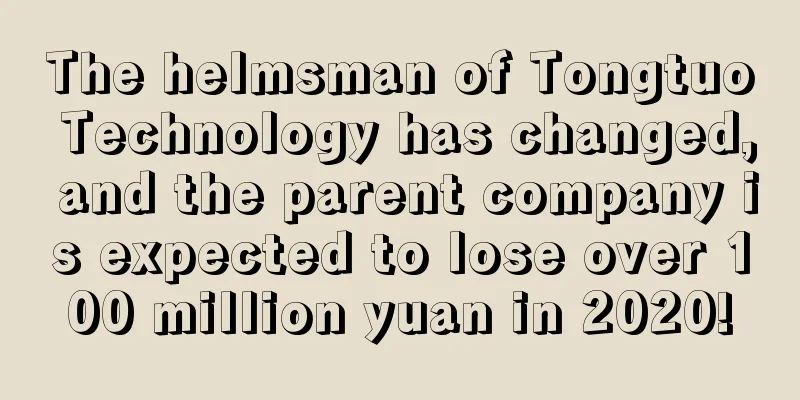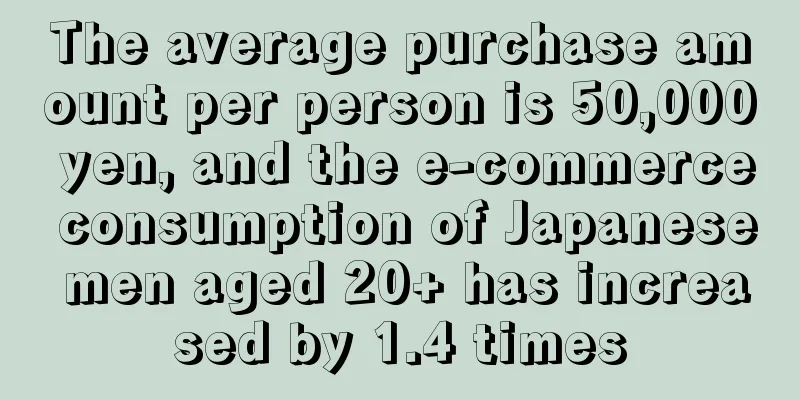735 million people! 37 market segments! This report details the prospects of European e-commerce

|
For most sellers, Europe is the most important market besides the United States. Under the epidemic, some new changes have occurred in European e-commerce. Recently, the European E-Commerce Association released a report. The report comprehensively analyzes the current e-commerce market situation in 37 European countries. Next, the editor will highlight the "key points" for everyone to quickly grasp the latest e-commerce trends in Europe.
Online shopping accounts for 70% of all purchases in Europe , especially in Western Europe
Let's first look at the overall situation in Europe. We all know that the European market is huge, but how big is it? The report predicts that in 2021, Europe's population should reach 735 million, more than twice the population of the United States; GDP will reach 18.333 trillion euros, which is similar to the total economic output of the United States.
In addition to the huge market, Europe also has a high Internet coverage rate, with the proportion of Internet users rising year by year and now close to 90%. Not only that, more and more people are joining the online shopping "army". The proportion of online shoppers has risen from 60% in 2017 to 73% now. As a result, the contribution rate of e-commerce to GDP has also risen to 4.6%, an increase of about 1.5% from 2017.
It should be noted that due to the inconsistent pace of economic development, the e-commerce market conditions in various parts of Europe are also different. According to natural geography, Europe is divided into Western Europe, Eastern Europe, Southern Europe, Northern Europe and Central Europe.
In Western Europe, 96% of people are Internet users , and 87% of people are online shoppers; in Eastern Europe, 78% of people are Internet users, and 44% of people are online shoppers; in Southern Europe, 87% of people are Internet users, and 64% of people are online shoppers; in Northern Europe, 96% of people are Internet users, and 84% of people are online shoppers; and in Central Europe, 89% of people are Internet users, and 78% of people are online shoppers.
Western Europe accounts for the largest share of total European e-commerce sales , at 64% ; Southern Europe ranks second, at 16%; as for the rest, Central Europe accounts for 8%, while Eastern Europe and Northern Europe both account for 6%.
Western Europe is the most developed region for e-commerce , far ahead of other regions. However, in terms of growth, Eastern Europe's e-commerce growth rate in 2020 was 36%, while Western Europe's growth rate remained moderate at 4%. Central and Southern Europe had similar growth rates, at 28% and 24%, respectively . Compared with other parts of Europe, Eastern Europe's e-commerce development is lagging behind , but it also has strong potential .
In addition, the 27 EU countries are also the focus of everyone's attention. In 2021, the proportion of Internet users in the EU is about 91%, and the proportion of online shoppers is 75% ; GDP will reach 12.987 trillion euros, and the contribution rate of e-commerce to GDP will be close to 4%.
The EU is the economic core of Europe, accounting for 70% of the total GDP. And because of the interconnection between EU countries, the EU has become a market that sellers focus on.
It is understood that 88% of EU people will choose to shop domestically, 31% will choose other EU countries, 22% will choose non-EU countries, and 40% will choose other countries (including EU and non-EU countries).
United Kingdom – 99% of the population uses the Internet
The UK is a developed country with a very high Internet usage rate, with 99% of its people using the Internet . Although the growth rate of Internet usage in 2021 has dropped from 2.26% to 1% compared to 2020 , this also shows that the Internet usage population in the UK is approaching saturation. And 93% of Internet users consume through online shopping, which also shows that the UK is a high-quality country for the development of e-commerce products.
According to FIS Worldpay 's forecast, more than 20% of shopping in the UK will be completed online in 2024 , and the amount of online consumption will reach 264 billion pounds.
In the era of social media, many businesses will use social media to promote and market their products. At this time, understanding the popular local social media applications and "prescribing the right medicine" is the key to obtaining traffic passwords.
In the UK, Facebook is the most popular social media among local people, with a usage rate of 52% ; Pinterest ranks second with a usage rate of 25% ; relatively speaking, Twitter , Instagram and YouTube are not that popular, with usage rates of 13% , 5% and 2% respectively .
Amazon is the dominant player in the UK, with 417 million monthly active users, which is enough to show how much British consumers love it. The most common items purchased by British people online are clothing and shoes, accounting for 68% .
Regarding the UK market, some sellers said:
——Although the UK consumer market is small compared to the United States, China and Japan, it is very willing to spend money, so the opportunity to strike gold is still great. ——The market demand in the UK is still quite large. As a major trading country, they still rely on imports for many of their products .
Germany - Sustainable development is the main theme of future development
Internet usage in Germany in 2021 is 96% , which has been growing steadily since 2018. Facebook is the most popular social media in the country, with 67% of users; Pinterest ranks second with 18% usage.
German expert Martin Groß- Albenhausen said that during the epidemic, groceries and pharmacies were the categories with the largest growth in online shopping. In addition, the proportion of elderly people shopping online has also increased rapidly.
The pandemic has also forced businesses to change. Many companies have switched from traditional business models to online. Even if they have never sold goods online before, they have started to promote their company information through networks such as Instagram during the lockdown . Online markets have also provided them with the necessary infrastructure to help them adapt to the e-commerce market as quickly as possible.
Sustainable development is an issue that German retailers need to pay attention to. The survey found that although consumers are willing to pay for sustainable development, if a product is listed as "organic" and then charged a higher fee, consumers will not pay for it. Some merchants will reduce packaging to achieve sustainability, but this practice has increased the return rate. Because consumers will choose to return the purchased goods when they see that they do not have the original packaging. So how to achieve sustainability while being accepted by consumers is the next question that merchants should think about.
France : Pursuing Practical Consumption Characteristics
The Internet usage rate in France in 2021 is 94% . Facebook is the most popular social media among French people, with 72% of users. Pinterest is second , with 16% of people using it. Twitter , Instagram and YouTube have relatively low usage rates, with 6% , 3% and 2% respectively .
According to the analysis of professional Marc Lolivier , before the epidemic, the development of e-commerce in France was in a steady upward trend, but it began to soar in 2020 , and it has increased by nearly 41% in the fourth quarter alone .
He also said that the characteristics of French consumers' online shopping are that they pursue practicality and have requirements for product diversity. In addition, the types of goods purchased by consumers are different during each lockdown period.
During the first lockdown, computers and cultural products were the focus of consumers' online shopping; in the second lockdown, consumers allocated more of their budgets to furniture and household items. In 2021 , health and beauty, and online food products have maintained high sales.
Russia – Contactless and same-day delivery gain popularity
In Russia, only 81% of the population uses the Internet in 2021. And compared with 83% in 2019 , there is a decline. But overall, it is still in a relatively stable state.
In terms of social media usage, Vkontakte , a local Russian social networking site , is the most popular among local people, with a usage rate of 24% . Facebook , Pinterest , YouTube , Twitter and Instagram are equally popular, with usage rates of 18% , 18% , 15% , 13% and 10% respectively .
Professional data analyst Nadezhda Vinogradova mentioned in an interview that the epidemic has become a driving force for the growth of online shopping. In 2020 , Russian e-commerce grew by 44% , with about 10 million new users who had never purchased anything online before. During the lockdown, sales of sportswear, cosmetics, shoes and some office supplies performed well.
It is worth noting that during the epidemic, about 105,000 sellers sold their products through Instagram and some Internet celebrities. The Russian government also has relevant initiatives and financial subsidies to cultivate these new sellers.
In addition, many online stores have started contactless delivery and same-day delivery services, which have helped sellers increase sales and has become a popular trend.
However, in Russia, sellers face difficulties in logistics and customs. Different types of goods require different logistics companies, such as refrigerators and mobile phones. For multi-category sellers, logistics costs are a big problem .
2021 is still a year affected by the epidemic, but overall the global e-commerce market has continued to develop as a result. Sellers should formulate different marketing strategies for different countries to achieve more impressive results in the new year.
The full report is available at: https://ecommerce-europe.eu/wp-content/uploads/2021/09/2021-European-E-commerce-Report-LIGHT-VERSION.pdf European Market Report |
Recommend
What is Comercia Global Payments? Comercia Global Payments Review, Features
Comercia Global Payments is committed to providin...
Heat wave sweeps across Europe, AliExpress July European market insights: Xiaomi energy-saving fans sold out twice
Recently, not only has the domestic temperature c...
Prime Day flopped? Sellers: The entire company didn’t make a single order
Prime Day officially begins today, and Amazon has...
The 2021 Fortune 500 list is released, with Walmart first and Amazon third
The latest Fortune 500 data has been released. Wa...
What is DC Trans? DC Trans Review, Features
DC Trans is a cross-border service brand carefully...
Reporting infringement and still being blocked? Amazon sellers are devastated...
The editor learned from Amazon's official sel...
What is Ship&co? Ship&co Review, Features
<span data-docs-delta="[[20,{"gallery"...
What is OrderCup? OrderCup Review, Features
<span data-docs-delta="[[20,{"gallery"...
A running list of major e-commerce platform transactions in 2021
Last year, a number of retailers made deals in th...
What is ericprom? ericprom Review, Features
Ericprom is committed to providing better customer...
Listings were removed in batches! A large number of Amazon sellers were forced to pay
Where there is profit, there is the world! Cross-...
The online shopping penetration rate in Spain is as high as 76%.
According to foreign media Retail Actual, recentl...
What is Instabox? Instabox Review, Features
Instabox was founded in Sweden in 2015 and operate...
Prime Day sales have dropped significantly? What are the sellers' coping strategies?
The first Prime Day of 2021 has come to an end. W...
What is Yunlu Supply Chain? Yunlu Supply Chain Review, Features
Yunlu Supply Chain is the leader in China’s air a...









